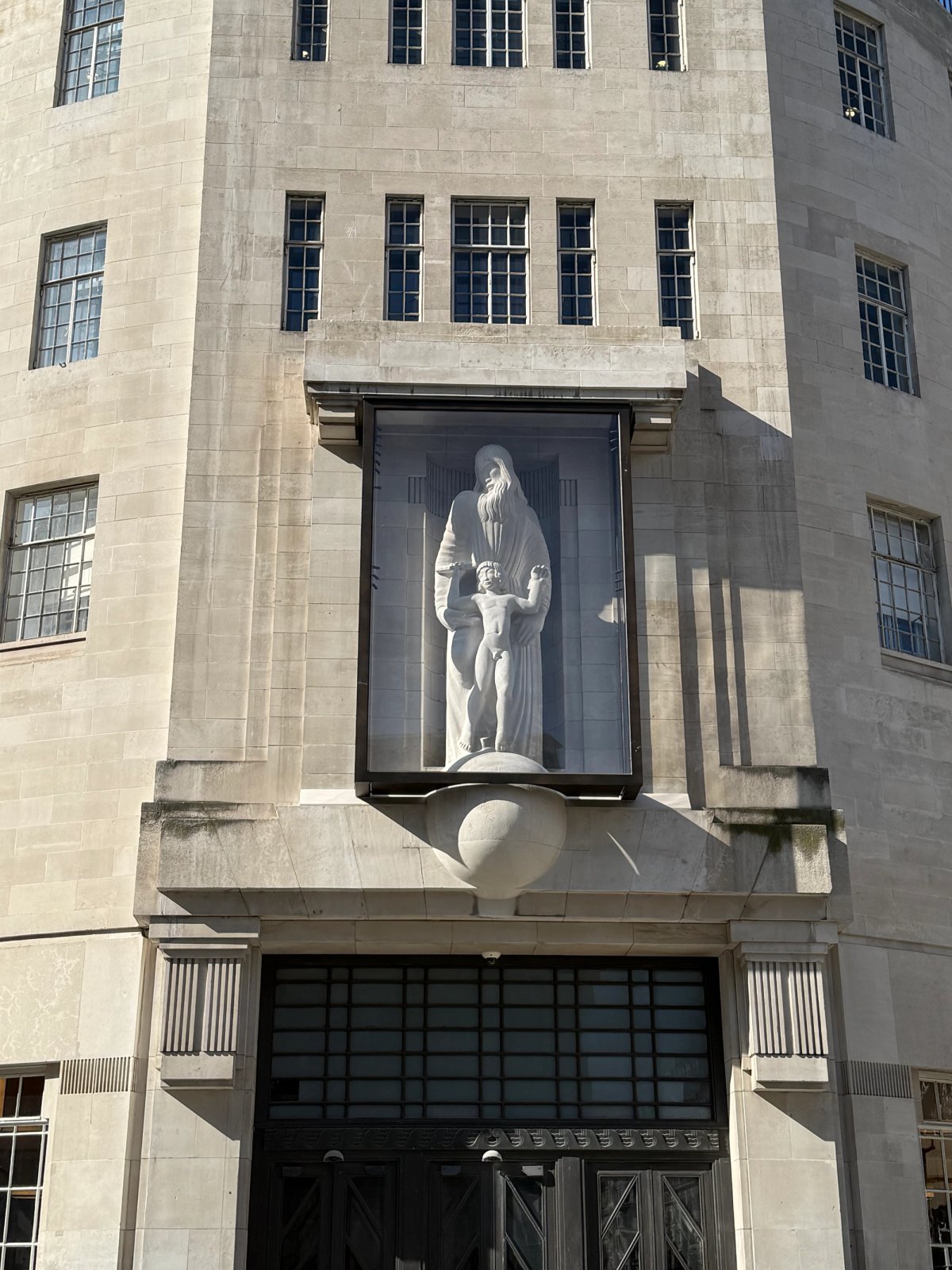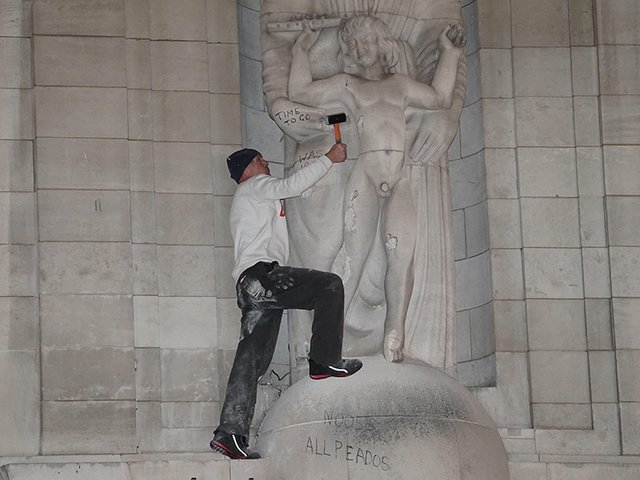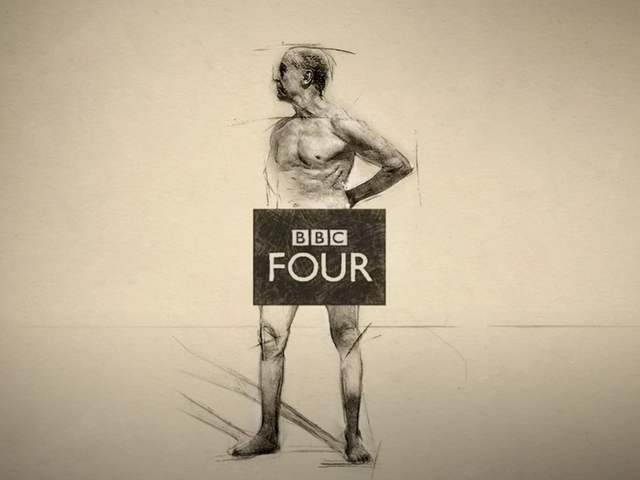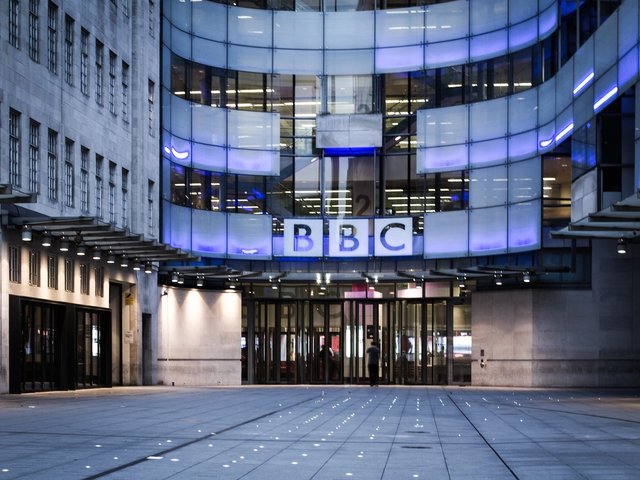A sculpture by Eric Gill outside BBC Broadcasting House in central London has been unveiled following restoration works; the piece is also accompanied by a text with details of the artist's “abusive behaviour”. The repairs come after attacks on the sculpture in recent years. The BBC said the estimated total costs of the restoration and protective work was £529,715.
The restored work, which depicts Prospero and Ariel from William Shakespeare's play The Tempest, is now housed in a protective glass case. A QR code alongside links to information about the history of the BBC building, Gill and the sculpture's restoration.
The QR code text says: “As a Grade II listed building, Broadcasting House is recognised by Historic England for its unique architectural and cultural importance… the BBC has installed a transparent cover as part of its obligation to protect the building.”
Gill, who died in 1940, is remembered as much for his well-documented paedophilia as for his art. His personal diaries revealed his sexual abuse of his young daughters and of his dog, all of which were brought to light by Fiona MacCarthy's 1989 biography of the artist.
The accompanying QR code text says said that while the corporation “in no way condones Gill's abusive behaviour”, it “draws a line between his life and his artistic creations”.
The sculpture was vandalised twice in 2022 and 2023. David Chick, 58, of Bozeat in Northamptonshire, is accused of damaging the Grade II listed statue located in Portland Place in May 2023; he was already facing trial for criminal damage to the same statue during a previous incident in 2022. He pleaded not guilty to attacking the work.
Last month, Chick was ordered by a court not to go within 100 metres of the statue. A trial date was subsequently set for May next year at Southwark Crown Court.
The BBC statue was commissioned by then director-general Sir John Reith in the early 1930s and installed in 1933. “Ariel as the spirit of the air was felt to be an appropriate metaphor for the new magic of radio,” says the QR code text. However, the fact the sculpture features a naked child has been cause for concern for campaigners who repeatedly called for its removal.






